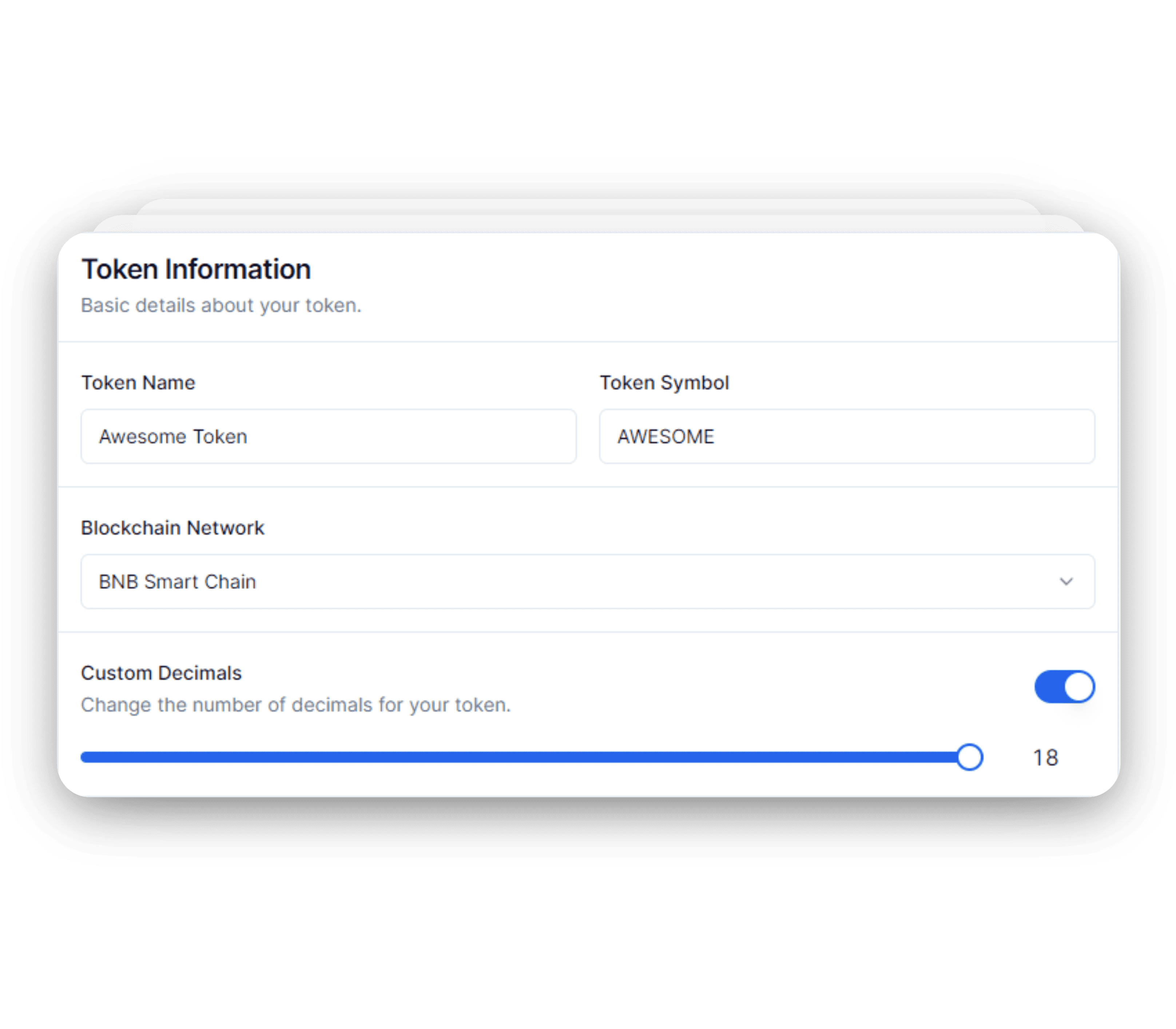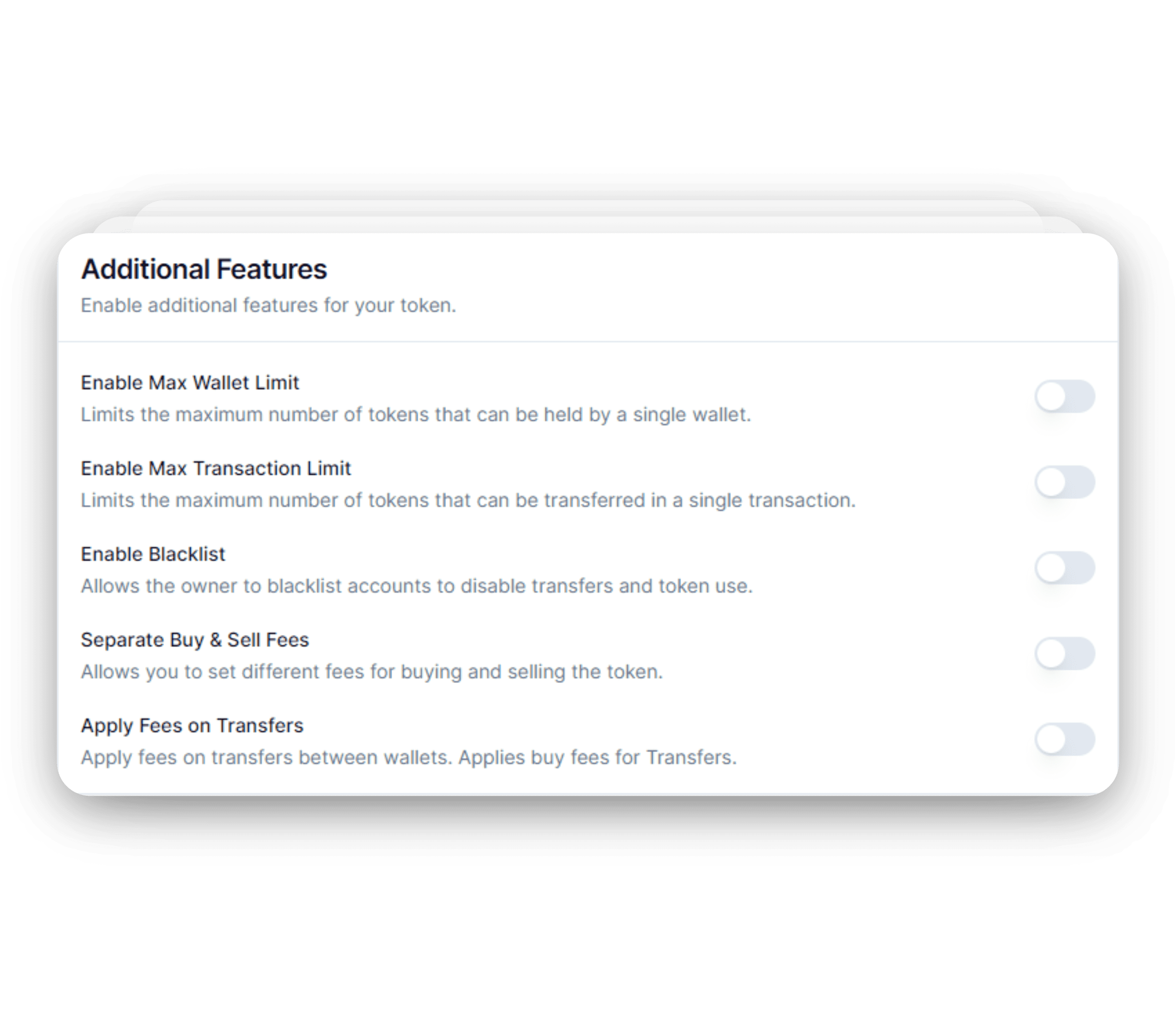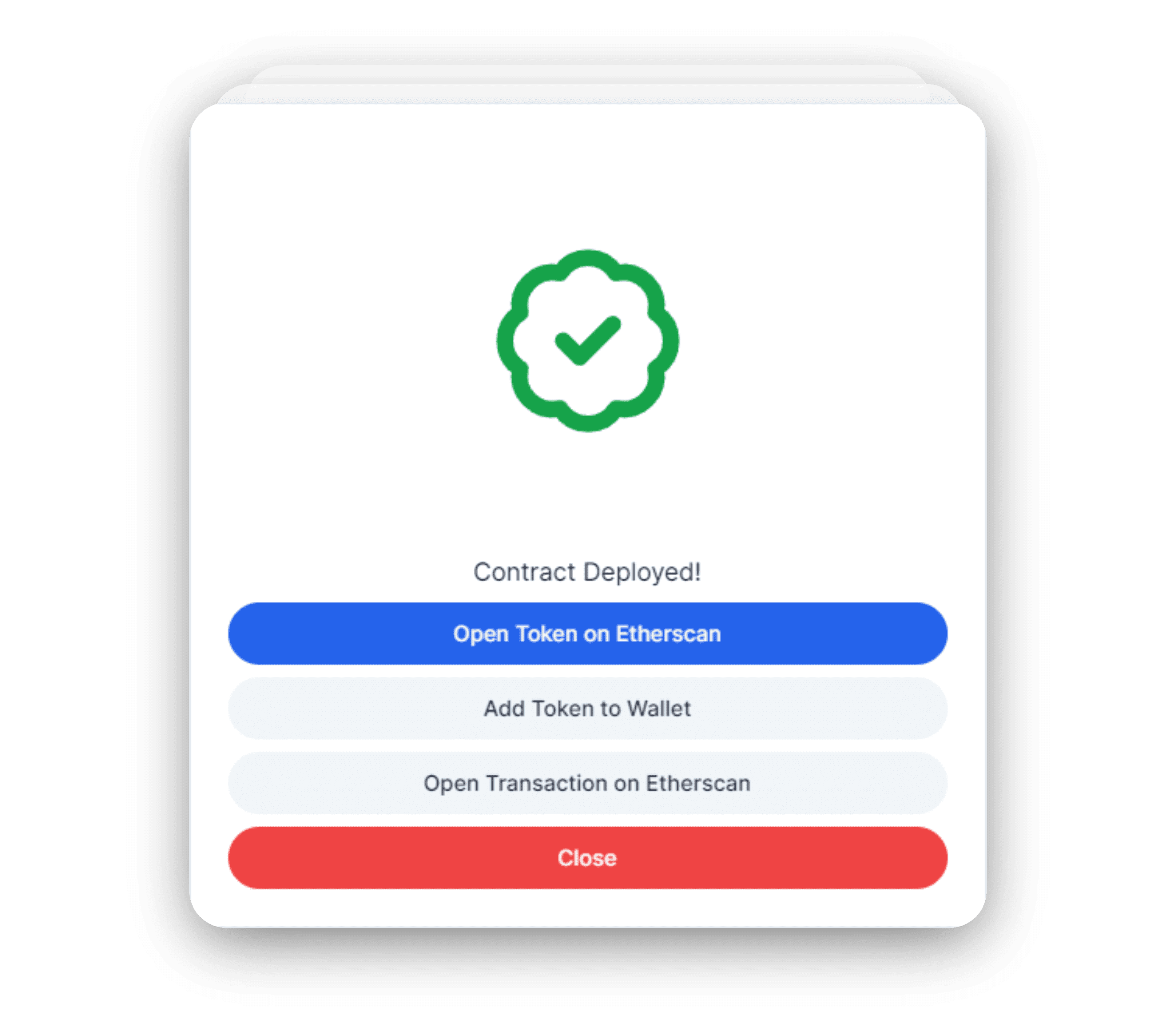Create your own token in just 1 minute.
Quickly create and deploy your own token on any network, choose from our variety of options and features to customize the token to your liking.

Choose your blockchain.
Deploy your token on the blockchain of your choice. We proudly support all major blockchains, including Solana, Ethereum, BNB Smart Chain, and more.
No compromises, no matter the choice.
We offer a number of options, so we include a standard set of features with all our tokens. All of these features are included with all of our tokens, for no extra cost, so you can rest assured that you already have the best.
Works with every wallet and exchange.
All of our tokens go through rigorous testing to make sure they are fully compliant with the standards.
Tested by the best.
All of our tokens have been audited to ensure the best security practices and standards are taken care of.
The highest security standard.
All our tokens go through a formal verification process to ensure they are safe and secure.
Verified before you're done.
All of our tokens are pre-verified on all major block explorers, they show up as verified immediately.
You're the only one with access.
Our tokens come with advance access control, making sure that only you have access to all token functions.
Immaculate track record.
We've been building tokens for 5+ years, our tokens are used by thousands of people. Unbeatable track record.

The fastest way to create your token.
Create your own token in less than 1 minute. The fastest, most secure way to create your own token, make no compromises!
Simply connect any supported wallet to our platform and you'll be able to create your token in no time.

Unbeatable ecosystem.
We have fostered an ecosystem unlike anything else. Tokens deployed using our platform are supported by the entire blockchain ecosystem, from wallets to exchanges to aggregators and more.

Build your token today.
Choose from our variety of options for ERC20 and BEP20 tokens with features such as Minting, Burning, Taxes, Dividends, Unlimited Supply and more.
You have questions, we have answers.
We're here to answer any question you may have, and here is a curated list of most commonly asked questions. Feel free to ask more!
What is Create My Token?
Create My Token is an online tool to create and deploy your own ERC20 and BEP20 Tokens on many different blockchains such as Ethereum, BNB Smart Chain and more.
What is an ERC-20 Token?
ERC-20 tokens are blockchain-based assets. ERC-20 Tokens are Smart Contracts running on the Ethereum blockchain. They can be sent and received like any other crypto. ERC-20 Standard provides specifications on how these assets must be sent, received and stored.
What is a BEP-20 Token?
BEP-20 tokens are blockchain-based assets. BEP-20 Tokens are Smart Contracts running on the BNB Smart Chain. They can be sent and received like any other crypto. BEP-20 Standard provides specifications on how these assets must be sent, received and stored.
What is a Taxable Token?
We offer tokens with the capability of adding taxes, and you are able to configure the taxes based on your needs. It allows you to add taxes such as burn tax, transfer tax, buy or sell tax, etc. Options are available in the app when creating tokens.
What is a Dividend Token?
We offer tokens with the capability of adding dividends, and you are able to configure the dividends based on your needs. Dividend Token allows you to reward users when they hold tokens, giving them dividends when the reward token is added.
What is a Deflationary Token?
We also offer Deflationary tokens in our app. Deflationary tokens are tokens that have a mechanism to remove tokens from supply, usually a burn tax. This will reduce the total supply of the token over time, making it more scarce and valuable.
What is Fixed Supply Token?
The entire token supply of the Token be generated during deploy and will be sent to Token Owner wallet. You can't increase or reduce the supply later.
What is Capped Supply Token?
When you create the token, an initial supply of the tokens will be sent to the owners wallet. You can increase or decrease the supply of the token up to Total Supply of the Token. You won't be able to generate more tokens than the defined supply cap.
What is Unlimited Supply Token?
When you create the token, an initial supply of the tokens will be sent to the owners wallet. You can later increase or decrease the supply of the token without any limits.
What is Single Owner Token?
The access to your token is limited to you, the person who created the token. There are no privileged actions for your token. You can still send and receive the tokens like usual.
What is Role Based Token?
Your Token will have two Roles, MINTER and ADMIN. Users with 'MINTER' role will be able to mint new tokens. Users with 'ADMIN' role will be able to assign these roles to minters or other admins. The account you use to deploy your Token will be ADMIN and MINTER by default.
Who can Burn or Mint my tokens?
Minting depends on the access type. In case of Transferable Ownership, the owner will be able to mint new tokens. In case of Role Based tokens, users with the MINTER role will be able to mint new tokens. You will only be able to mint new tokens until your Supply Cap is hit, which is Unlimited in case of Unlimited Token. Everyone will be able to burn the coins they hold.



























